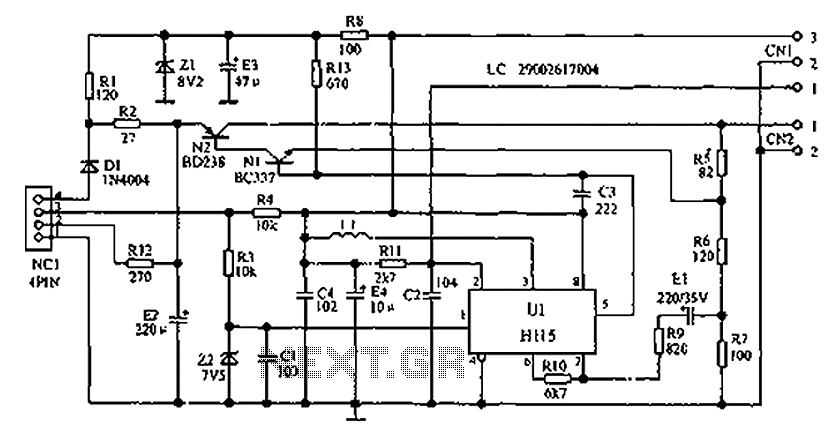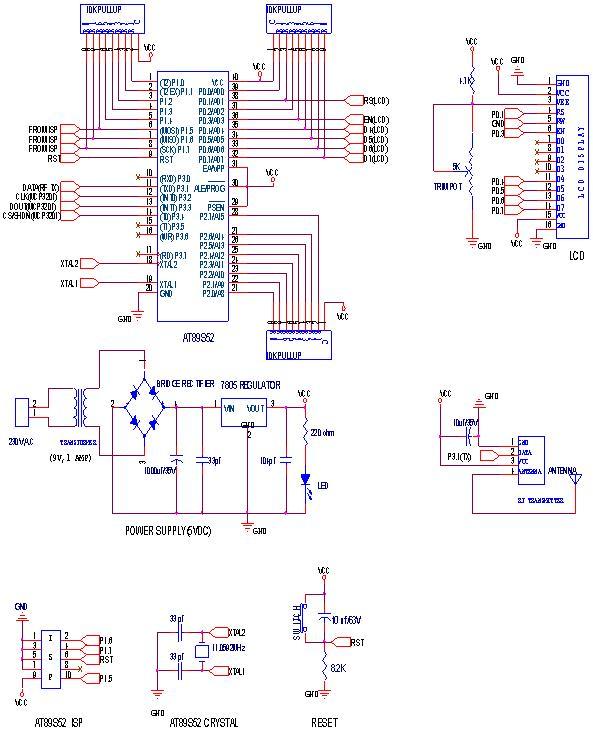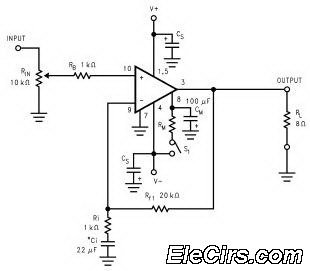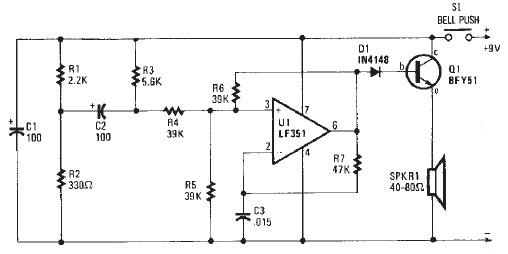
Schematic Diagram FM Transmitter 4Watt
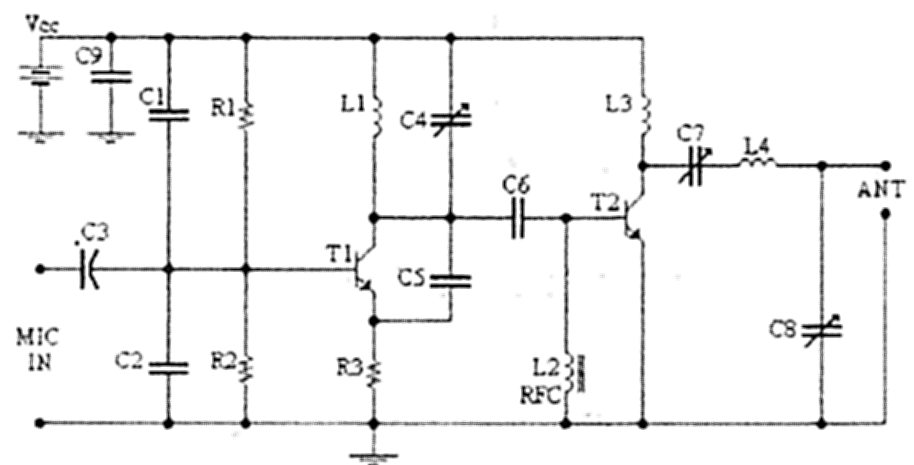
L2 RFC (resistance 1MOhm with an inductor wrapped around it, composed of multiple coils made from fine insulated wire. The scratch of the inductor connects to the resistance, forming a parallel L-R circuit.) With capacitors C7 and C8, we adjust the resistance of the aerial to ensure that our voice is heard clearly on the radio.
The circuit described involves an L2 RFC (Radio Frequency Choke) with a resistance of 1MΩ, which is crucial for filtering unwanted frequencies and ensuring that only the desired signals are amplified. The inductor is wound with a sufficient number of coils using fine insulated wire, which enhances its inductance and allows for effective energy storage in the magnetic field when current flows through it. The arrangement creates a parallel L-R circuit, where the inductor (L) and the resistor (R) are connected in parallel, enabling the circuit to manage energy dissipation while maintaining the desired frequency response.
The addition of capacitors C7 and C8 plays a vital role in tuning the circuit. These capacitors are used to adjust the overall impedance of the aerial system, allowing for fine-tuning of the circuit to maximize the clarity and strength of the transmitted voice signal. By manipulating their values, the resonance of the circuit can be optimized to ensure that the audio signal is transmitted effectively, reducing noise and enhancing the quality of the received signal. This setup is particularly useful in radio communication applications, where clarity and fidelity of voice transmission are paramount.
In summary, this circuit configuration, with its combination of a high-value resistor, an inductor, and tuning capacitors, is designed to enhance radio frequency performance, ensuring that voice signals are transmitted and received with optimal clarity.L2 RFC (resistance 1MOhm with wrapped around her inductor of enough coils from fine isolated wire. Scratch of utmost inductor and you stick in utmost the resistance making thus a parallel L-r circuit. ) With their C7, C8 we adapt the resistance of aerial (practically to them we regulate so that it is heard our voice in the radio as long as you beco
me cleaner). 🔗 External reference
The circuit described involves an L2 RFC (Radio Frequency Choke) with a resistance of 1MΩ, which is crucial for filtering unwanted frequencies and ensuring that only the desired signals are amplified. The inductor is wound with a sufficient number of coils using fine insulated wire, which enhances its inductance and allows for effective energy storage in the magnetic field when current flows through it. The arrangement creates a parallel L-R circuit, where the inductor (L) and the resistor (R) are connected in parallel, enabling the circuit to manage energy dissipation while maintaining the desired frequency response.
The addition of capacitors C7 and C8 plays a vital role in tuning the circuit. These capacitors are used to adjust the overall impedance of the aerial system, allowing for fine-tuning of the circuit to maximize the clarity and strength of the transmitted voice signal. By manipulating their values, the resonance of the circuit can be optimized to ensure that the audio signal is transmitted effectively, reducing noise and enhancing the quality of the received signal. This setup is particularly useful in radio communication applications, where clarity and fidelity of voice transmission are paramount.
In summary, this circuit configuration, with its combination of a high-value resistor, an inductor, and tuning capacitors, is designed to enhance radio frequency performance, ensuring that voice signals are transmitted and received with optimal clarity.L2 RFC (resistance 1MOhm with wrapped around her inductor of enough coils from fine isolated wire. Scratch of utmost inductor and you stick in utmost the resistance making thus a parallel L-r circuit. ) With their C7, C8 we adapt the resistance of aerial (practically to them we regulate so that it is heard our voice in the radio as long as you beco
me cleaner). 🔗 External reference
